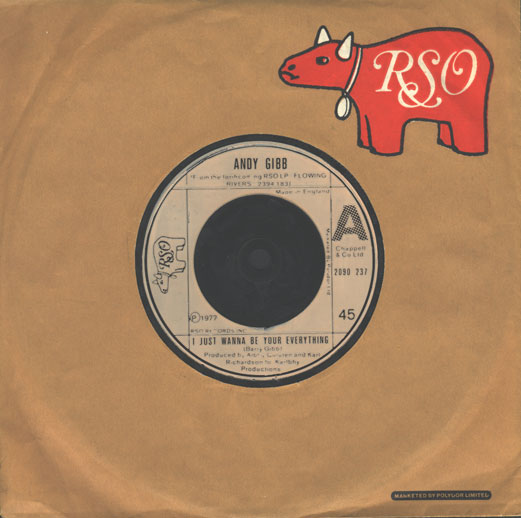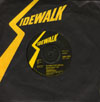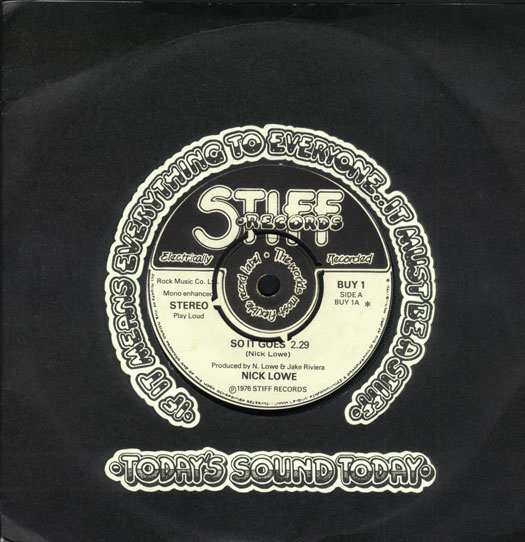|
 -
company sleeves from the 50's to the 80's -
company sleeves from the 50's to the 80's
Click on the images to see a larger version. My comments are bound to be incorrect in places, so please send me
corrections or more info if that's the case. Keep checking back regularly for updates and more scans.
Please do not directly link to these images for your own pages; it won't work.
You require my advance permission to use them; please contact me to make arrangements. The artwork remains copyright of the record company.
Page 8 (RSO to Tamla Motown)
(Previous page) (Back to index) (Next page)
RSO
The Robert Stigwood Organisation was founded in the late 1960s, with the record label following a few years later, run in parternship with (and distributed by) Polydor. With The Bee Gees and Eric Clapton, RSO had two of the 70s biggest selling acts. Add the films soundtrack LPs to Saturday Night Fever and Grease, note that the label had six consecutive US number 1s in 1977, and you'll soon realise why RSO was probably the most succesful label of the 70s.   | | There's only one RSO sleeve : beige, with the red RSO cow logo in the top right. The centre 'labels' are usually moulded plastic; a technique pioneered by RSO's associated label, Polydor. |
Sidewalk
Here's one you won't see too often: Sidewalk Records was a short-lived US disco label, and keeping with the trend of the times, EMI decided to release their product under the Sidewalk name in the UK. But other than Gonzalez's "Haven't Stopped Dancing Yet", there were no other releases of note. Let me know if you spot one!   | | So here it is : black sleeve, yellow logo - not much more to say! |
Stateside
Since the mid-50s, Decca had brought its US releases and affiliates to the UK through the famous London label. EMI soon tried a similar approach: they looked for US record companies without a UK distribution deal, and from 1963 put them out here under the Stateside banner. Most notably, Tamla Motown was released under Stateside before EMI gave the label its own identity (for example, The Supremes "Baby Love" and "Where Did Our Love Go"). The stalwarts of Stateside were Gene Pitney, Tommy Roe (previously released by HMV) and Lee Dorsey - all great quality, soulful American music. .jpg) .jpg) | | The first Stateside sleeve (note the dollar sign in the logo) was typical EMI: simple blue background, with large logo at the top and a smaller version at the bottom. |
.jpg) .jpg) | | A slight variation here: EMI soon chose to add its own name to all its label designs, and so this dual-logo version was seen from late 1964 onwards. |
Stiff
The world's most flexible label: if it means everything to everyone, it must be a Stiff. Dave Robinson and Jake Riviera started the label in 1976 (with a £400 loan from Dr Feelgood's Lee Brilleaux) and their entreprenurial skill and artistic style, together with a penchant for off-beat publicity stunts, quickly made Stiff into probably the most iconic UK independent of all time. Early releases came from Nick Lowe, the Damned, Ian Dury and Elvis Costello; in general, the label covered the ground between pub-rock and punk-rock. Jake moved on in 1978 (to start Radar), leaving Dave to find further success with Lene Lovich, Madness, Jona Lewie, Kirsty MacColl and many more. The story of Stiff is already well-documented online; hit your favourite search engine and you'll find plenty more.   | | Although Stiff featured many central label designs, there was only one generic sleeve regularly used in the UK. Here it is on the very first Stiff release, and it's being used again today following the label's reactivation in 2006. Of particular note is Stiff's role in the demise of the company sleeve; the label was one of the first to really see the role individual picture sleeves could play in promoting the records within. |
Tamla Motown
There's not much left to be said about Tamla Motown that isn't well-documented elsewhere. Berry Gordy's US soul label is probably the most famous of all: its distinctive and consistent house-style make most Motown records instantly recognisable. Distribution in the UK varied: from London, to Oriole, then through EMI to Stateside, and finally from March 1965 under its own (EMI) imprint. The Four Tops, The Supremes, The Isley Brothers, Martha Reeves & The Vandellas, Marvin Gaye, Stevie Wonder - an incredible roster that is still as popular (and highly collectable) today. .jpg) .jpg) | | EMI's first Tamla Motown-branded releases came in this orange sleeve, with Tamla Motown logo in the corner and five stars down the side. |
.jpg) .jpg) | | By 1967, the label colour had changed to this unusual greeny-brown hue: the design remained the same. |
(Previous page) (Back to index) (Next page)
|










.jpg)
.jpg)
.jpg)
.jpg)


.jpg)
.jpg)
.jpg)
.jpg)